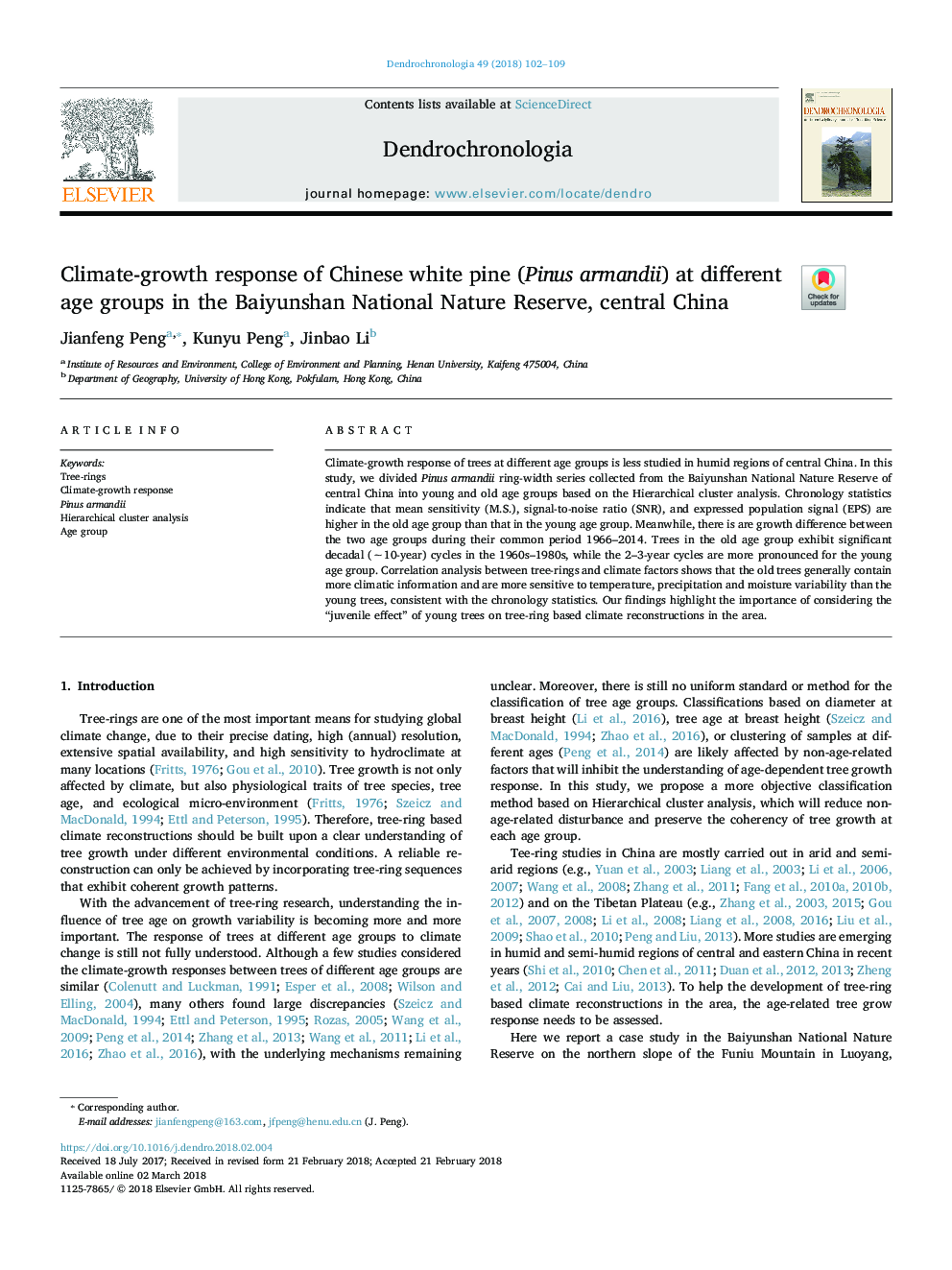| Article ID | Journal | Published Year | Pages | File Type |
|---|---|---|---|---|
| 6541273 | Dendrochronologia | 2018 | 8 Pages |
Abstract
Climate-growth response of trees at different age groups is less studied in humid regions of central China. In this study, we divided Pinus armandii ring-width series collected from the Baiyunshan National Nature Reserve of central China into young and old age groups based on the Hierarchical cluster analysis. Chronology statistics indicate that mean sensitivity (M.S.), signal-to-noise ratio (SNR), and expressed population signal (EPS) are higher in the old age group than that in the young age group. Meanwhile, there is are growth difference between the two age groups during their common period 1966-2014. Trees in the old age group exhibit significant decadal (â¼10-year) cycles in the 1960s-1980s, while the 2-3-year cycles are more pronounced for the young age group. Correlation analysis between tree-rings and climate factors shows that the old trees generally contain more climatic information and are more sensitive to temperature, precipitation and moisture variability than the young trees, consistent with the chronology statistics. Our findings highlight the importance of considering the “juvenile effect” of young trees on tree-ring based climate reconstructions in the area.
Related Topics
Physical Sciences and Engineering
Earth and Planetary Sciences
Atmospheric Science
Authors
Jianfeng Peng, Kunyu Peng, Jinbao Li,
